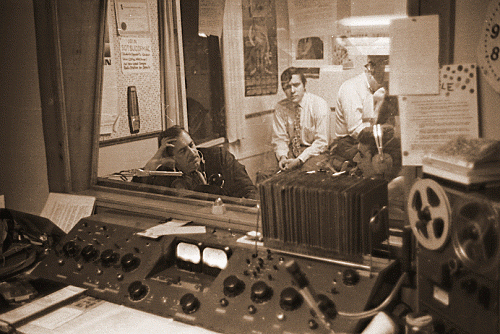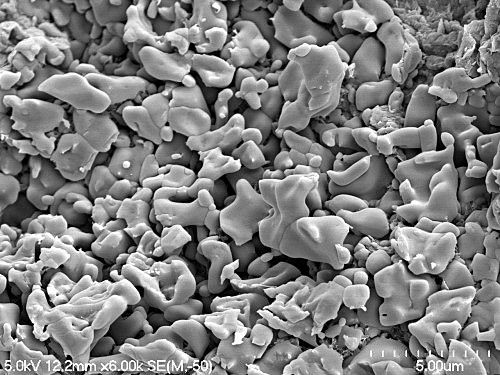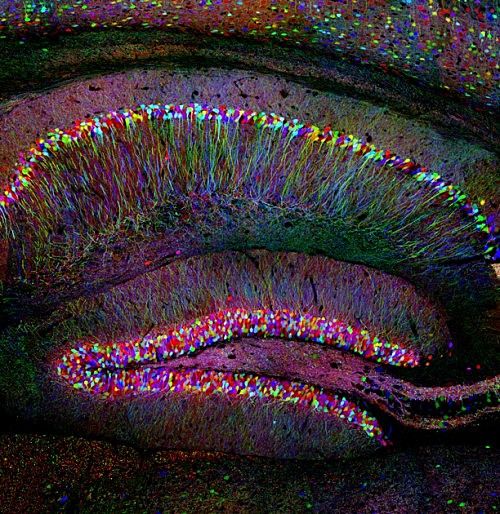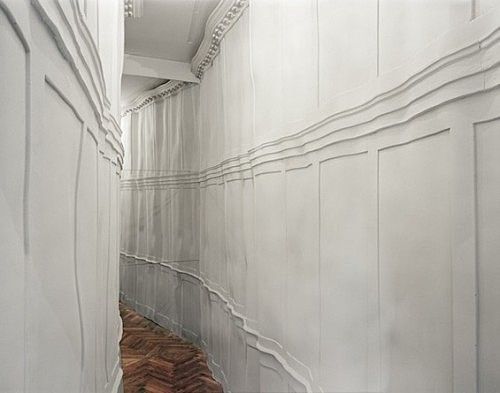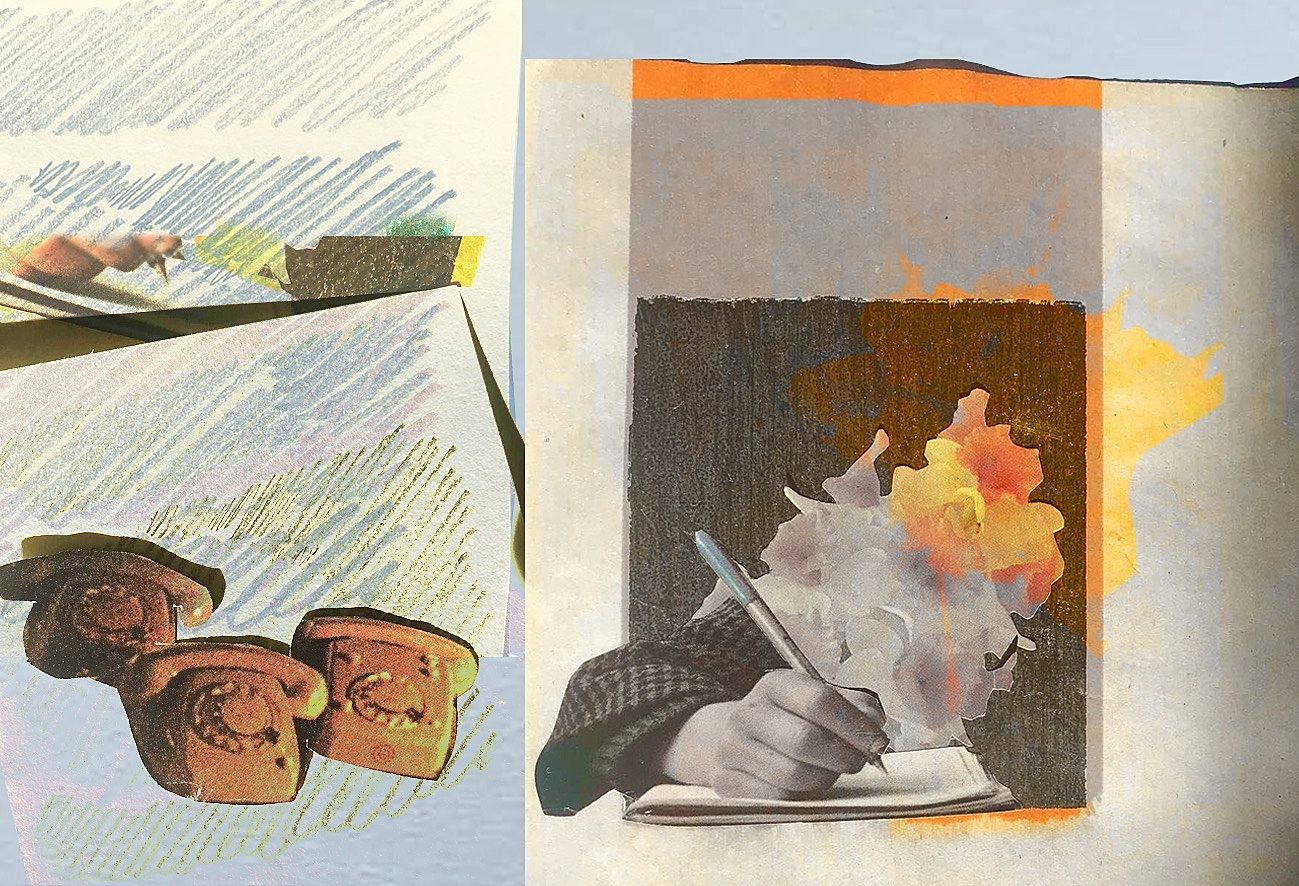Internet Histories | 18 February
Jean Shepherd and the Hurling Invective, spaces made strange, New Zealand's Sexiest Girl and New Games Journalism
This Fortnight:
Jean Shepherd and the Hurling Invective | Where art and science intersect |
Spaces made strange | More on DayZ | New Zealand's Sexiest Girl
Beck's Independence, USA | New Games Journalism
and
a warm hey and hello to our new writers Adam Goodall and Bronwyn Bent
Bronwyn
A profile of 1950's disc jockey Jean Shepherd, the prototype for every self-destructive, self-loathing, alternative radio type ever. "He was the sort of guy who was always there at the start of things, but never the end when the rewards were distributed." Amongst other delights, he regularly featured a slot called "Hurling Invective" which was designed solely to discomfort listener's neighbours, by encouraging his followers to put their radios on their windowsills and pretend they weren't home whilst he shouted epigrams across the airwaves in the middle of the night. There's links at the bottom of the article to some of his broadcasts, and not a royal impersonation amongst them.
Somehow I found myself at 7am one weekday watching videos of Slash talking about releasing the first Snakepit album. (This fact will no doubt come up in some sort of therapy in years to come). Anyway, that led me on to a much more edifying video of Duff McKagen, one of my top five childhood crushes. It's from the BBC's Hard Talk, and far from the usual OMG YOU HAVE A NEW ALBUM OUT puff piece; it's a slightly testy encounter from when interviewer Sarah Montague asks him about some of the lyrics he's written and how he'd explain them to his now teenage daughters. ("It's tongue in cheek... the spirit of rock and roll is above misogyny"). He also talks about his pancreas exploding.
The comments are heavily pro-Duff. Gibson1976 says: "The interviewer is probably use to interviewing fake little pop acts like One Direction who get told what to say!! and act like they are your mums best pal!! I hate the fake pop music scene!! ive actually worked at some pop events!! plastic people"
Rosabel
[caption id="attachment_5689" align="aligncenter" width="500"] ‘Freeze-dry NaBt with Gelatin’ (MacDiarmid Institute)[/caption]
Professor Roald Hoffman - winner of the 1981 Nobel Prize for Chemistry - gave a talk on Saturday at the Gus Fisher Gallery on the nervous motion between art, narrative and science. His discussion (an extended version of this essay he wrote for American Scientist) revolved around their current exhibition - Art of the Invisible: Exploring the World of Nanotechnology - and how we're inclined to process these images as photographs when in fact they're not. They are the eventual recordings of an electronic sensor, but they're capturing the movement of electrons, not light. There are also issues with scale. The image above is one of the only pieces in the collection that gives you a finite idea of how microscopic it is, but even then it's hard to conceptualise. Then there's the fact that many of the images are falsely coloured, added in post-processing in order to make interpretation easier. Some colour is real, of course, like the vibrant reds seen in muscle cells, but it's difficult to know whether we're seeing natural colour or colour that's been induced through the injection of specific proteins.
After his talk, he mentioned that he was currently collecting black-and-white graphs that were extremely meaningful to him. He cited his most recent addition: a graph illustrating the thalidomide disaster in the 60s. This particular graph, he said, had time on the bottom axis, and comprised two lines: one represented sales of the sleeping pill and the other represented incidence of foetal malformation. There's a beauty in that kind of minimalism - nightmarish disasters reduced to simple strokes. This is the power of the images in the Gus Fisher exhibition, too: their beauty comes from understanding the science they signify.
Over the past year, I've been struck by two images in particular. The first is actually an imaging technique: Brainbow imaging is relatively new, first described in 2007, and uses fluorescent proteins to tag individual neurons. It's a technique that allows you to see how structures are organised and how neurons are connected, and this in turn lets you track pathways connecting different brain regions. It's incredibly powerful. It's also very pretty. Here's one of a mouse hippocampus (where memory is stored):
The other is a video of circadian rhythms, also in a mouse. What you see here are neurons from the suprachiasmatic nucleus (the area of our brain that regulates our circadian rhythm) beating out of phase. As I understand it, the cells in this structure communicate with and synchronise other cells in our body, so that everything runs to the same schedule, but what this video shows is that each cell is also completely autonomous, and doesn't need the input of surrounding cells in order to do this. More on that here.
[caption id="attachment_5683" align="aligncenter" width="500"] Le Cercle Fermé by Martine Feipel & Jean Bechameil[/caption]
Le Cercle Fermé, or the Closed Circle, makes us aware of space: of our expectations and our needs and the psychological impact of imperfection. As you walk through the house you encounter warped walls, columns that bulge and lean, drawers that flop and sag. It makes space visible to us and it makes space strange, evoking the same unfamiliarity you experience in Mark Z. Danielwski's novel House of Leaves - here, a man discovers that the interior of his family home is longer than the exterior. Initially, the difference is less than an inch - perhaps a measurement error of some kind, but as time passes, the internal measurements expand while the external ones don't. A door appears where previously there was none. It leads to a hallway. It's physically impossible - the hallway that should extend into the yard, since it takes five-and-a-half minutes to walk, yet doesn't, and beyond the hall, there's another room, leading to more hallways, more rooms, and a huge spiral staircase leading down into a dark and cavernous space that seems to have no end.
It's a fantastic book - terrifying, clever, claustrophobic. It's one that makes us aware of space not only in the way that Le Cercle Fermé does - physically - but in terms of text. It makes us aware that we're reading from a page, through both its unpredictable formatting and the narrative itself:
I wish that had been all. Just a slight decrease in illumination and a little breathing difficulty. Could still blame that on a blown fuse or some aberrant drug-related flashback. But then my nostrils flare with the scent of something bitter & foul, something inhuman, reeking with so much rot & years, telling me in the language of nausea that I'm not alone. Something's behind me. Of course, I deny it. It's impossible to deny. I wanna puke. To get a better idea try this: focus on these words, and whatever you do don't let your eyes wander past the perimeter of this page.Now imagine just beyond your peripheral vision, maybe to the side of you, maybe even in front of you, but right where you can't see it, something is quietly closing in on you, so quiet in fact you can only hear it as silence. Find those pockets without sound. That's where it is. Right at this moment. But don't look. Keep your eyes here. Now take a deep breath. Go ahead take an even deeper one. Only this time as you start to exhale try to imagine how fast it will happen, how hard it's gonna hit you, how many times it will stab your jugular with its teeth or are they nails?, don't worry, that particular detail doesn't matter, because before you have time to even process that you should be moving, you should be running, you should at the very least be flinging up your arms - you sure as hell should be getting rid of this book - you won't have time to even scream.
Here are some instagrams of a Japanese boy with his French bulldog to make you feel safe again.
You may have also noticed we're doing some construction on the site. Sorry about the temporary invisible mess. Here: listen to this clip of a walrus under water. That's the secret noise our site is making, in the invisible spaces where you're not looking. You could also browse through the rest of the world's largest natural sound archive, now fully online (the calls of the common loon are pretty good, too).
Also: David Lynch on his favourite photographs, Kathryn Ryan completely owning Richard Prosser and God the Midget by Etgar Keret (a recently translated story; written when he was 20)
Jose
Twenty four hours after publishing last fortnight's Internet Histories post about DayZ, I stumbled across what can only be the ultimate DayZ video. It’s just one in a series by an Australian gamer who calls himself Cherno Journo. He’s an in-game war journalist who goes around interviewing gamers about their experiences online. He’s even been kidnapped. Twice! However, the following interview about a gamer and his estranged brother playing DayZ is genuinely touching. Despite the widely held view that gaming is a solitary pursuit, it demonstrates how ultimately it’s about social and emotional engagement. It’s also terrifying, not just in the story itself, but also in the implications for intertwining online and “real life.”
A tangentially linked video is this German documentary about real life war gamers who regularly meet in Russia to run around in bushes and shoot each other. Make sure you watch the whole thing (and turn on the english subtitles). Like Cherno Journo’s interview with “Endrid” it contains some truths about media and the public.
And fans of Parks & Recreation will no doubt appreciate the news that it appears we have our very own local branch of Entertainment 720.
Exhibit A:
Exhibit B:
Adam
I'm morbidly fascinated by America's far-right cultural warmongers. Political discourse in the US would be immeasurably richer without people like Rush Limbaugh, Rupert Murdoch and the deceased Andrew Breitbart casting their shadow over it. But how could you have your Wacky Races without your Snidely Whiplashes?
One of the most interesting members of this coterie is Glenn Beck. Once a fresh-faced 'morning zoo' host (see video above) averse to talking politics live (Alexander Zaitchik's three-part profile for Salon, starting here, is a comprehensive overview of Beck's early rise and spectacular fall), Beck restyled himself as an ultra-conservative personality who was part truth-teller, part carnival barker. As the host of his self-titled fox show, Beck was a Michael Shannon performance of a man, revelling in his unfettered hatred for liberalism. After his fall from favour at the network that fit him (and his ranting about government and sippy cups) like a glove, he started his own media network, The Blaze. A couple of weeks ago, he laid out his plans for going Galt, and I haven't stopped thinking about it since.
Beck's Independence, USA is (hopefully) little more than a pipe dream, but his passionate and detailed walkthrough of his $2bil libertarian utopia is a compelling insight into the dreams and ideals of a man until now defined by his reactions rather than his actions. A lot of Independence drips with nostalgia for that mythical white picket fence America, up to and including its apprentice-based labour force and its suburban streets that are actually grass paths. There's also a predictably strong hint of the Orwellian to it -
Before you send your kids to college, you come with us [at the Learning Centre]...you spend a week with us, we're gonna tell them exactly, we will show them THE TRUTH, we're gonna tell them what they'll try to do, and we'll deprogram them EVERY SUMMER if you care. We'll also take anyone who wins an election - I don't care if you're a mayor or you're a senator or a President - you can come here and we will SHOW YOU THE TRUTH of the ideas and the ideals that formed this country!
The most telling part of the Independence pitch, though, is when Beck starts talking about the city's sizeable theme park. It's then that you know that, despite all the renaissance man posturing, he's still putting on a show. The carnival barker never went away.
* * *
In 2005, video game writer Kieron Gillen coined the phrase 'New Games Journalism' in order to categorise a new breed of games criticism, one that took its cue from Tom Wolfe's The New Journalism by viewing video games through a personal lens. To put it in Gillen's words -
New Games Journalism ... argues that the worth of a videogame lies not in the game, but in the gamer. What a gamer feels and thinks as this alien construct takes over all their sensory inputs is what’s interesting here, not just the mechanics of how it got there. Games have always been digital hallucinogens — but games journalism has been like chemistry, discussing the binding reactions to brain sites. What I’m suggesting says what it feels like as the chemical kicks in and reality is remixed around you.
While drug-poetry is certainly one approach to the subject matter –and one the earlier State experiments turned to — it’s not the strongest. “Bow, Nigger”, while being clearly totally subjective, austerely embraces Hemmingway’s cleanness. The tone has to be confessional — what happened to you and how it made you feel — or people simply won’t believe it, or be interested. Pub anecdotes with delusions of grandeur, essentially.
The movement exploded in popularity after Gillen's 'manifesto', and with that came the requisite critiques of the style: It's pretentious. It's self-aggrandising. It doesn't actually address what's wrong with games journalism.
During a recent internet slapfight between writer Jonas Kyratzes and fans of writer Mattie Brice (over a piece she wrote on satire in Spec Ops: The Line), Kyratzes linked to The Ethics of Selling Children. Written by Electron Dance writer Joel Goodwin, it’s a piece probing his own discomfort with confessional games writing. That it uses the confessional format in doing so makes it a self-aware member of the school of writing he critiques – and gives it the heft that other hitpieces often lack. There's an affection here for the things 'New' games writers have to say, even if Goodwin has concerns about what they add to games journalism and whether it's worth the occasional exploitation. And it's almost enough – almost – to forgive his attempt at faking out the audience at the end.
* * *
